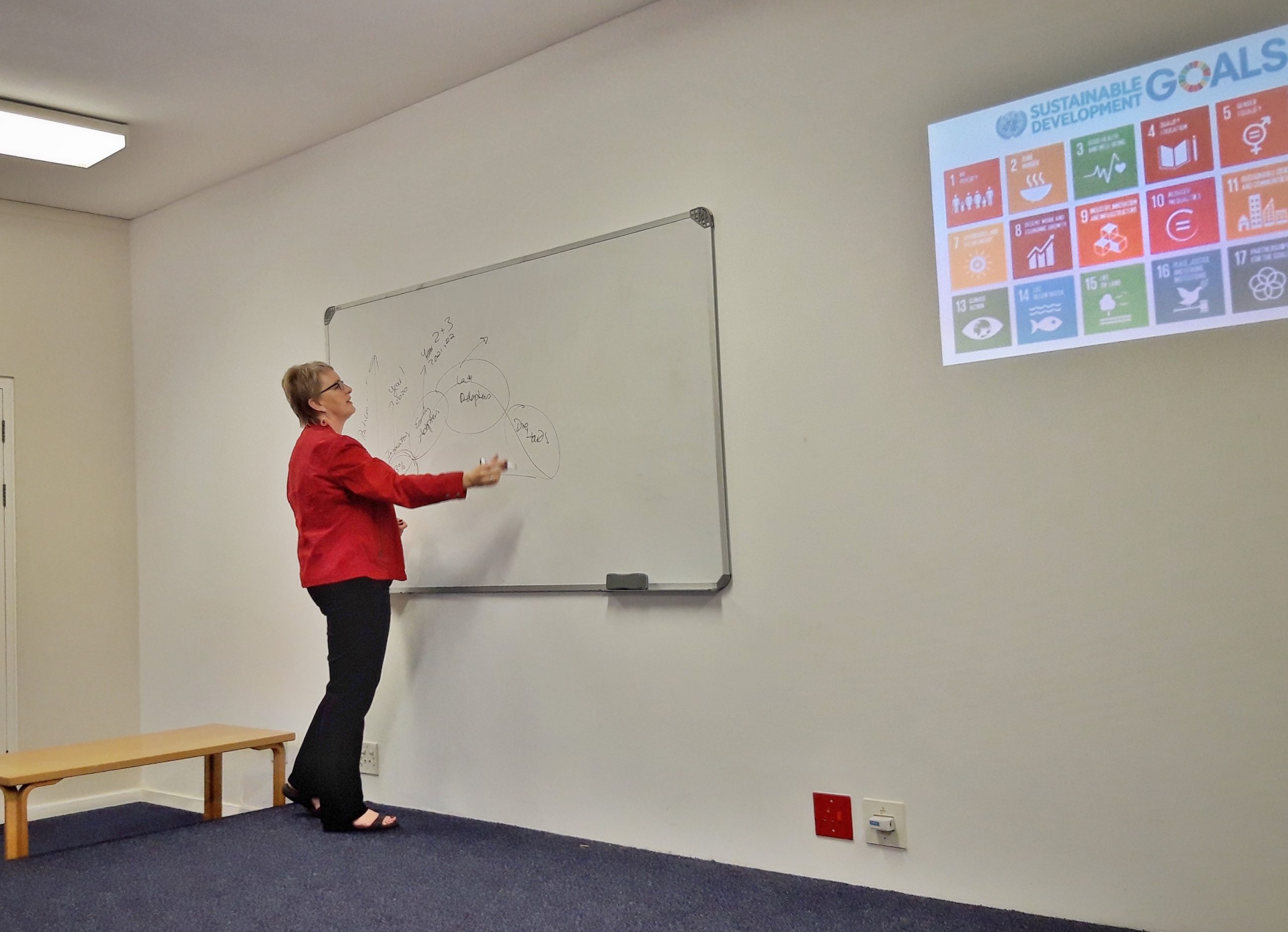“How can we realise a corporate world that tackles social challenges?” Asking this question motivated our speaker, Ms. Judi Sandrock to move from a purely corporate environment to social entrepreneurship and co-found XinaBox. She came and explained the XinaBox model for our third SEADS series seminar on Friday 20 September.
She identified the need to diversify the economy in order to avoid the dependence on a single resource, such as mining in the South African context. For example, in the United Arab Emirates, famous for their oil production, less that 10% of the economy is actually dependent on oil. This is the result of 30 years of targeted economic diversification.
By 2020, 80% of jobs will be related to the 4th industrial revolution. Therefore, we need to ensure that South African children have access to the skills needed to be part fo the revolution and not be left behind.
Two topics fascinate nearly all children: dinosaurs and space. So XinaBox use those topics as a conduit to inspire children to learn the skills to be active participants in the 4th industrial revolution.
“XinaBix gets kids – from urban as well as rural schools – to design satellites. In order to do so, we have invested in developing suitable technology.” says Judi.
XinaBox has developed entire sets of modular electronic modules, which can be used in schools at low cost, and are designed so that they can fly in the challenging physical and atmospheric conditions of orbit.
On 17th of April this year, 41 such satellites were launched by schools all over the world!
XinaBox has a for-profit business that supplies its non-profit initiative in South Africa. The company has three co-founders. The patent for XinaBox is registered in Ireland, in order to avoid imitators – given potential costs of taking them to court. In fact, the next generation of modular electronic elements and sensors has already been developed and is ready to be put into the market once previous one has been copied…

The electronic modules include weather and light sensors and on-board computing to collect data, analyse it and find patterns and correlations. The problems investigated in the school initiatives are consistent with the syllabus. The XinaBox curriculum was developed to address 11 of the 17 United Nations Sustainable Development Goals and to stimulate problem solving skills.
The children develop gas and Carbon Monoxide sensors, gamma ray detectors and more and in the process, they think about how different these measurements are going to look once in orbit. They have to think about how their project will work in a space environment. The units they build go up into orbit on SpaceX, but also on high-altitude atmospheric balloons.
The XinaBox material has been used by learners of all ages, from grades 1 to grade 12. Government-funded schools don’t pay for XinaBox, they earn the modules through commitment.
Interestingly, external funding sources only participate because the for-profit arm of the company sponsors the non-profit projects. An observation Judi shared with the audience was that companies are mostly willing to help a non-profit only if the non-profit doesn’t need them for the basics.
In terms of Monitoring & Evaluation, the department of Higher Education and Training requires quantitative assessments, while donors require qualitative evaluations. XinaBox measures the impact of the programme using prior, during, post evaluations.
In the long term, the aim of XinaBox is to reach 10,000 schools by 2025 in South Africa alone. There is an agreement with the Department for Higher Education and Training that will already reach 450 schools, of which 200 are funded by the department, and the rest by private donors. The schools are reached through the Department of Higher Education and Training’s communication channels with the schools. XinaBix selects schools who show their willingness to commit to the project by seeing who takes the initiative.
After this presentation, the audience was left inspired by all that this project has achieved, all as a private initiative. It is also a great example of successful public-private partnership and many members of the audience from UWC and beyond were eager to investigate how to bring this initiative into the fold of UWC.
Thank you Judi and XinaBox for a great presentation!
